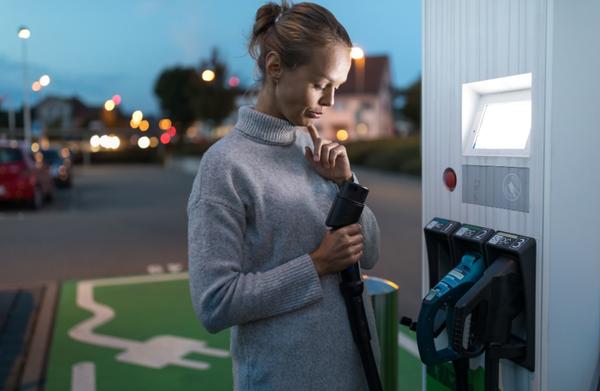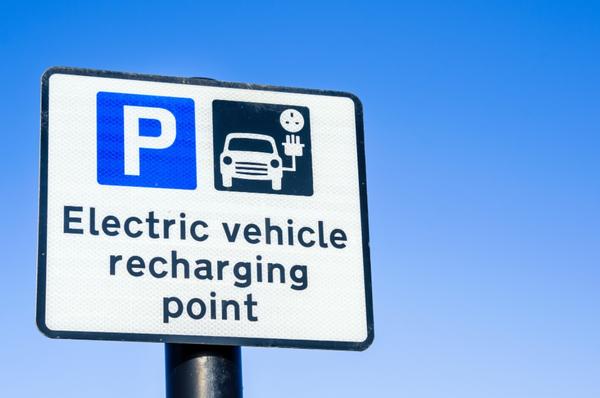Advice
What’s the Difference Between Slow, Fast, and Rapid Charging Points in the UK?
Confused by the different options for charging your EV? Here are the three main charging choices, and how long each will take to charge your car.


Words by: Andrew Woodhouse
Published on 18 July 2023 | 0 min read
When you’re looking at charging speeds, it’s easy to get lost in the jargon of kilowatt hours and AC/DC currents – but none of that is actually essential to know.
All you need to know is how big your battery is, and how much power you’ll get out of a charging point. From that, you can work out how long it’ll take to charge your car. It’s that simple. So, which charger should you plug into? Here’s your no-frills guide to charging speeds, so you know which one to use and when.
All you need to know is how big your battery is, and how much power you’ll get out of a charging point. From that, you can work out how long it’ll take to charge your car. It’s that simple. So, which charger should you plug into? Here’s your no-frills guide to charging speeds, so you know which one to use and when.
What are charging speeds?
As the name suggests, charging speed is the amount of time it takes to top your electric car’s battery up. The bigger your car’s battery and the slower the charging point, the longer it takes to charge from empty to full – though most drivers top up their charge rather than going from empty to full each time.
Charging an EV can take anywhere between 30 minutes and 10 hours, depending on the type of charger you’re using, the size of your car’s battery, the number of miles you do between charges, and your how much charge you need. To work out how long it’ll take to charge your electric car, you can use this equation: Size of battery (kWh) divided by speed of charger (kW) = average time taken.
Charging an EV can take anywhere between 30 minutes and 10 hours, depending on the type of charger you’re using, the size of your car’s battery, the number of miles you do between charges, and your how much charge you need. To work out how long it’ll take to charge your electric car, you can use this equation: Size of battery (kWh) divided by speed of charger (kW) = average time taken.

Charging point speeds explained
In the UK, there are three main types of charging points: slow, fast, and rapid. Each one charges at a different speed and has unique advantages and disadvantages.
Slow Charging Points
Slow charging points, also known as Level 1 charging, offer the lowest charging speed.
The majority of slow charging points have a power output of 3.6kW, taking approximately eight to 12 hours to charge a typical electric car like a standard Nissan Leaf with its 39kWh battery, and two to four hours to charge a plug-in hybrid electric vehicle (PHEV). They’re suited for overnight charging at home or in places where you’ll be parked for extended periods, like the workplace. Advantages: anyone who can run a lead from their car to a plug in their house can do it, and the steady trickle of power generate less heat, reducing the risk of battery degradation over time Disadvantages: there’s a much higher risk of over-heating the plug and lead – especially if you’re using a three-pin plug socket, which can be a fire risk and isn’t recommended, If using slow chargers, it’s recommended you use a dedicated wallbox, given they are safer and offer faster charge times compared with domestic three-pin plug sockets.
The majority of slow charging points have a power output of 3.6kW, taking approximately eight to 12 hours to charge a typical electric car like a standard Nissan Leaf with its 39kWh battery, and two to four hours to charge a plug-in hybrid electric vehicle (PHEV). They’re suited for overnight charging at home or in places where you’ll be parked for extended periods, like the workplace. Advantages: anyone who can run a lead from their car to a plug in their house can do it, and the steady trickle of power generate less heat, reducing the risk of battery degradation over time Disadvantages: there’s a much higher risk of over-heating the plug and lead – especially if you’re using a three-pin plug socket, which can be a fire risk and isn’t recommended, If using slow chargers, it’s recommended you use a dedicated wallbox, given they are safer and offer faster charge times compared with domestic three-pin plug sockets.
Fast Charging Points
Fast charging points, also known as Level 2 charging, offer higher charging speeds compared to slow chargers.
The majority of fast chargers are rated at 7kW (which is much faster than a domestic plug), but 22kW chargers are also available. So “fast” is a bit of a misleading name, as these chargers typically charge an electric car like the Nissan Leaf in our previous example in anything up to five hours and a PHEV in around an hour. Fast charging points are the most common type of charger in the UK, accounting for more than half of the charging network, and are commonly found in public locations like shopping centres and car parks. Public charging networks like Pod Point, BP Pulse, and Shell Recharge offer fast charging points accessible through mobile apps or RFID cards. Advantages: there are plenty of chargers around the UK, so it’s convenient to top up on the go. Disadvantages: it can take a long time to charge a low battery, which can lead to long waits at motorways service stations.
The majority of fast chargers are rated at 7kW (which is much faster than a domestic plug), but 22kW chargers are also available. So “fast” is a bit of a misleading name, as these chargers typically charge an electric car like the Nissan Leaf in our previous example in anything up to five hours and a PHEV in around an hour. Fast charging points are the most common type of charger in the UK, accounting for more than half of the charging network, and are commonly found in public locations like shopping centres and car parks. Public charging networks like Pod Point, BP Pulse, and Shell Recharge offer fast charging points accessible through mobile apps or RFID cards. Advantages: there are plenty of chargers around the UK, so it’s convenient to top up on the go. Disadvantages: it can take a long time to charge a low battery, which can lead to long waits at motorways service stations.
Rapid Charging Points
Rapid charging points, also known as Level 3 charging or DC fast charging, provide even faster charging speeds.
They tend to have a power output of 50 kW or above, with a few ultra-rapid chargers offering between 100 kW and 350 kW. For most electric cars, you can add up to 100 miles of range in half an hour at a 50kW rapid charger. Rapid charging points chargers are ideal for quick top-ups during long journeys and can deliver up to 80 per cent charge in just 20 minutes, though cars with bigger batteries will need longer. They are commonly found at motorway service areas or locations close to major roads. Advantages: they’re one of the most convenient and quick ways to charge an electric car when out and about. Disadvantages: excessive use of rapid charging can lead to potential long-term battery damage, so it’s best used when needed; they can also be expensive.
They tend to have a power output of 50 kW or above, with a few ultra-rapid chargers offering between 100 kW and 350 kW. For most electric cars, you can add up to 100 miles of range in half an hour at a 50kW rapid charger. Rapid charging points chargers are ideal for quick top-ups during long journeys and can deliver up to 80 per cent charge in just 20 minutes, though cars with bigger batteries will need longer. They are commonly found at motorway service areas or locations close to major roads. Advantages: they’re one of the most convenient and quick ways to charge an electric car when out and about. Disadvantages: excessive use of rapid charging can lead to potential long-term battery damage, so it’s best used when needed; they can also be expensive.